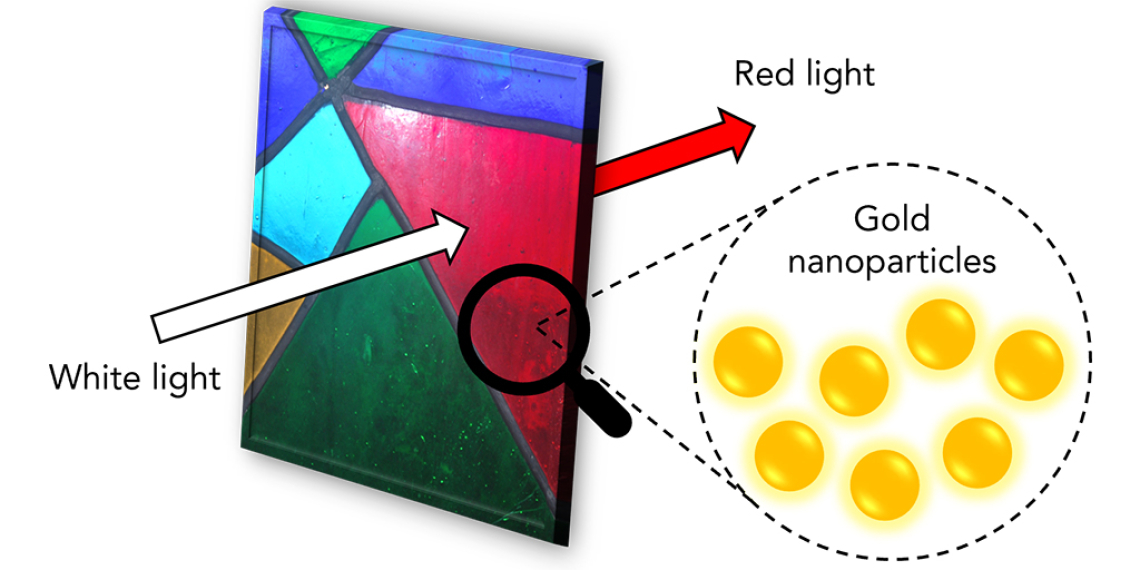
The use of gold nanoparticles (AuNPs) predates the scientific revolution, with the earliest known use being in the stained glass of the Lycurgus cup, thought to be preserved from the fourth century, AD. They have also been used frequently in stained glass windows. It is understood that gold particles dispersed in the glass are the cause of the deep red colour observable when light is shone through it. A nanoparticle (NP) is defined as a particle with at least one dimension between 1 nm and 100 nm in size. Metallic NPs have become abundant in scientific research because they exhibit interesting and tuneable physical, optical and chemical properties when compared with their bulk metal counterparts. This is true of AuNPs in particular, which have optical properties that are easily manipulated and related to their physical state and chemical environment. This means that they can be precisely engineered for a wide range of different applications.
Today, colloidal AuNPs are particularly useful for colourimetric and optical detection applications because they are efficient at absorbing and scattering light and can be tuned to exhibit optical activity at different wavelengths based on their physical and chemical characteristics. More specifically, they are capable of supporting a localised surface plasmon resonance (LSPR), caused by a displacement and coherent oscillation of the conduction electrons on the NP surface at a particular frequency when excited by incident light. The LSPR is an extremely useful parameter for optical sensing because its frequency depends strongly on several factors including NP size, NP morphology, interparticle distance and the refractive index of the surrounding dielectric medium, which can all be designed to change in response to an external variable in a detection assay. The optical properties of AuNPs are traditionally probed using UV-vis spectroscopy because it is an excellent technique for characterising a sample’s response to light over a large wavelength range and the LSPR appears on the absorption spectrum of AuNPs as a distinct peak. Hence, in this Application note, the optical properties of AuNPs are investigated using UV-vis spectroscopy. First, the LSPR of spherical colloidal AuNPs is investigated as a function of particle diameter. Then, the chemical sensing potential of AuNPs is demonstrated by tracking the LSPR during an induced aggregation experiment.

